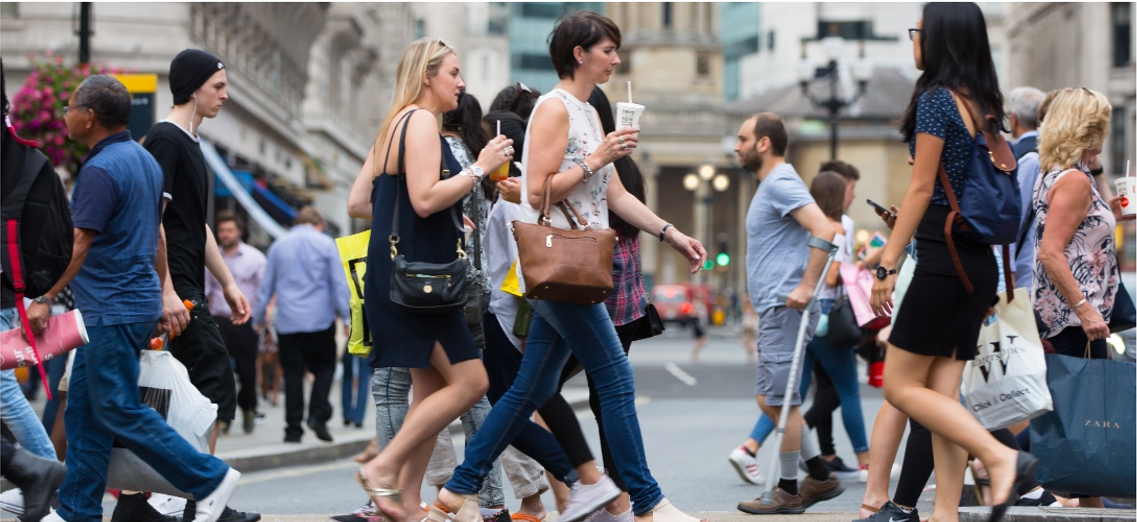WSL’s upcoming How America Shops® report on the future of WELL starts with emerging conditions shoppers are treating, bolder categories that are “out of the pantry,” faster services and a shift in trust and treatment. The dilemma is that as more categories have launched healthier choices, the Next WELLness Frontier is cluttered and harder for shoppers to choose.
Meet Your Shoppers’ Next Needs
Since 2014, WSL has been following the Big Business of WELL, and our latest research reveals a new frontier in the movement, driven largely by the half of shoppers who are under 40 with conditions that they have permission to discuss and for which they expect remedies.
In 2022, more shoppers are managing new health conditions and expecting products and technologies to treat them. They also are exploring bolder (and sometimes exhausting) well categories.
Our upcoming report, “The Next WELLness Frontier” compares the trends from previous years to learn what shoppers expect from brands, retailers and the healthcare community.
Here are the Next Frontiers of Opportunity
Loneliness is a key emerging condition. Despite their social connectivity, four in 10 Gen Z shoppers told us loneliness prevents them from living a healthy life, compared with one-quarter of total shoppers. How can someone be lonely when surrounded by social media? Because social “friends” aren’t necessarily intimate friends or confidants. Gen Zers also blame the solitude of too much screen time as interfering with their wellness.
More opportunities address weak immune systems. Perhaps due to the pandemic, the share of shoppers reporting weak immune systems has risen 9 percentage points since 2018. Many more products have taken the opportunity to support the immune system: water, seltzer, shakes, coffee, breakfast bars. This abundance of choices is encroaching on the traditional vitamin/supplement category, in part by adding ingredients and claims that used to be reserved for vitamins.
Prescriptions are rising. Since 2018, the percentage of people taking prescriptions has risen by 7 percentage points; and since 2014, it’s up 17 points. The rise in prescriptions should present a boon for pharmacies, but not so. Trust in pharmacists has declined significantly over the past four years – 20% of script shoppers say their pharmacist is too busy to answer questions. Online pharmacies, however, have made inroads among one-quarter of shoppers (and it’s not all Amazon!).
The big “app”ortunity: App use for health care is booming, up 19 percentage points since 2018. This includes continued use of fitness, diet, sleep and mental wellness apps. Brands that support health have an opportunity to reach one-quarter of shoppers who rely on brand apps. Almost half use pharmacy apps to manage prescriptions and connect to the pharmacist – the figure is even higher among Gen Z.
Retail clinics – an urgent demand. The pandemic has accelerated the growth of easy-access health clinics and shoppers followed, almost doubling in numbers since 2018 (CVS has a 10 percentage point lead). However, urgent care clinics sponsored by health conglomerates still attract more patients than retail clinics.
WSL’s Vision of The Next WELLness Frontier
- Boosting the immune system is a long-term opportunity, but manufacturers need to take the lead in helping shoppers make sense of the new choices. What is the right delivery system for protein, collagen, probiotics? Where is the truth in immunity?
- Clutter, clutter everywhere sends shoppers somewhere else. Shelves and displays are over-the-top with healthy choices, and it’s confusing shoppers. We learned in the How America Shops® Shopper Truths report in 2021 that honesty and transparency are the foundations for shopper loyalty. Smart manufacturers and retailers will take the lead to make claims genuine and make choosing easier.
- Apps have become universal connectors, but while many are downloaded fewer are used. Brands and retailers have the opportunity to become a shopper favorite as long as their apps deliver value.
- Clinics are the fast, affordable, trusted source for health care. The pandemic gave retailers a platform to showcase their value in this respect, and they did it well. The future challenge for retailers will be Amazon (which has recently entered into a merger agreement with the primary care provider One Medical) and all the virtual pharmacies that shoppers are trying.
There is so much more in The Next WELLness Frontier. Click here to see all the conditions, categories, and retailers that are covered in the report.
Explore the many other ways your retail experience can meet all your shopper needs, from health to personal values. To learn the latest in shopper sentiment regarding WELLness, and to see what your retail and brand peers are doing to meet those preferences, visit our dedicated WELL microsite.




